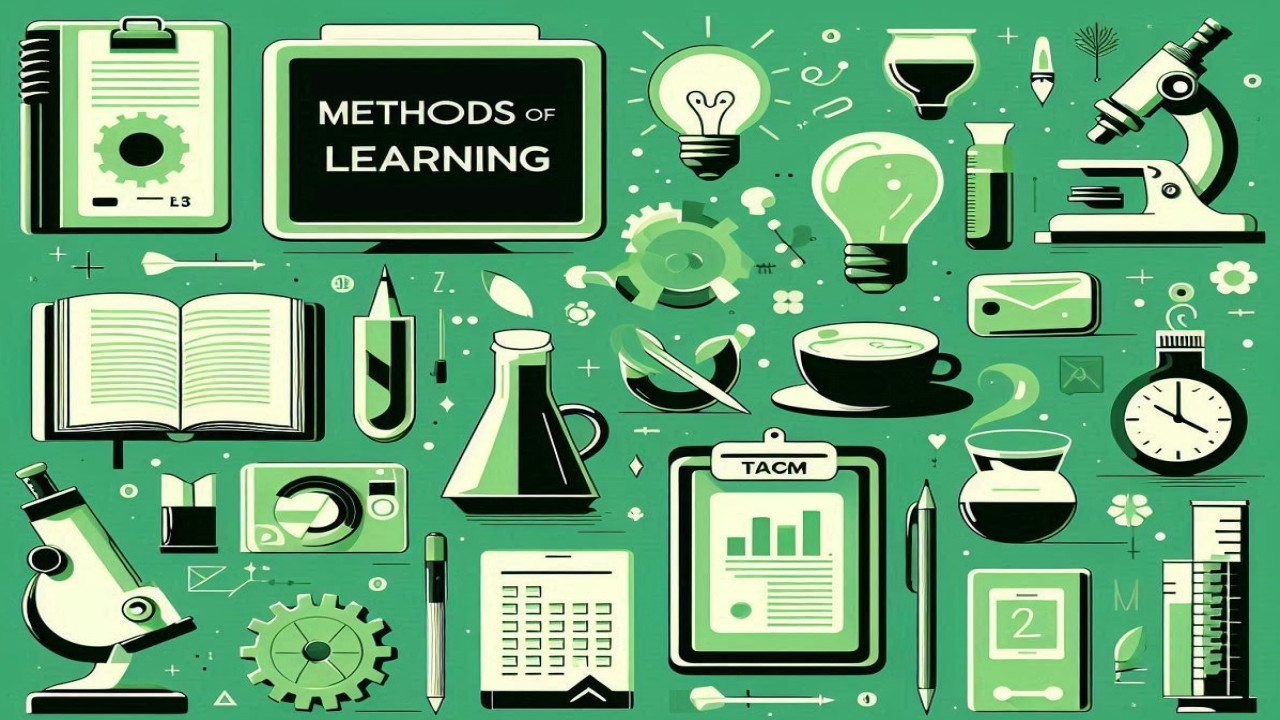Top 5 Effective Learning Techniques for Long-Term Success
Effective Learning Techniques: How to Retain Knowledge Long-Term
Learning is a lifelong journey—whether you're in school, university, at work, or pursuing personal development. But many of us face the same challenge: we read something, feel like we understand it, but a few days later, it's gone. The good news? There are scientifically proven learning techniques that help you store information in your long-term memory. In this article, I’ll introduce you to some of the most effective study methods, explain where they come from, and show you when and how to apply them for maximum success.
1. The Feynman Technique – Learn by Explaining
Complex topics often seem difficult until you try to explain them to someone else. That’s exactly what the Feynman Technique is about. Named after the famous physicist Richard Feynman, this method helps deepen your understanding and reveals true knowledge gaps.
Origin:
Developed by Nobel Prize-winning physicist Richard Feynman, this technique was created during his teaching career to make topics like quantum mechanics easier to understand.
How it works:
- Choose a topic you want to learn.
- Explain it as if you're teaching a child—using simple, clear language.
- Identify areas where you struggle—these highlight your knowledge gaps.
- Review and simplify those areas until you can explain them confidently.
Pros:
- Builds deep understanding.
- Makes complex content easier to grasp.
- Reveals weak spots in your knowledge.
Cons:
- Not ideal for pure memorization.
- Can be time-consuming as you craft simple explanations.
Best used for: Conceptual learning—ideal for subjects like math, science, and economics.
2. Spaced Repetition – The Key to Long-Term Retention
Ever wonder why you remember some things better than others? The answer lies in the forgetting curve, discovered by German psychologist Hermann Ebbinghaus. He found that new information is quickly forgotten unless it's repeated over time. That’s where Spaced Repetition comes in.
Origin:
Based on Ebbinghaus’ 19th-century research into memory and repetition, this method combats forgetting by spacing out reviews over increasing intervals.
How it works:
- Review material at planned intervals (e.g., after 1 day, 1 week, 1 month).
- Use flashcards or digital tools like Anki or Quizlet to automate your review schedule.
- As you grow more confident with a topic, the intervals between reviews get longer.
Pros:
- Supports long-term memory.
- Aligns with the brain's natural learning process.
- Prevents cramming and short-term learning.
Cons:
- Requires discipline and planning.
- Less suitable for last-minute exam prep.
Best used for: Learning facts, vocabulary, formulas—perfect for medical students, language learners, or anyone managing a large volume of data.
3. Active Recall – Retrieval Beats Recognition
One of the biggest traps in studying is passive reading. Many think they’ve mastered the material because it feels familiar—but recognizing information isn’t the same as knowing it. Active Recall flips this by challenging you to retrieve knowledge from memory.
Origin:
Backed by cognitive science research since the 1970s, this method is based on the principle that actively recalling information strengthens memory connections.
How it works:
- Ask yourself questions about what you’ve studied.
- Answer from memory without looking it up.
- Check your answers and focus on correcting mistakes.
Pros:
- More effective than passive review.
- Identifies knowledge gaps early.
- Makes studying more efficient.
Cons:
- Can be frustrating at first.
- Requires more mental effort than rereading.
Best used for: Exam preparation or subjects requiring strong memory recall—like law, medicine, or sciences.
4. Mind Mapping – Visualizing Complex Ideas
If you're a visual learner, Mind Mapping might be your ideal study technique. It helps organize complex information in a visual way, making it easier to see connections and grasp big-picture concepts.
Origin:
Popularized in the 1970s by British psychologist Tony Buzan, who recognized the brain processes visual information more effectively than linear text.
How it works:
- Write your main topic in the center of a page.
- Create branches for subtopics that relate to the main idea.
- Use colors, icons, and illustrations to enhance the visual layout.
Pros:
- Helps link and structure ideas.
- Great for creative or visual learners.
- Makes large topics easier to overview and remember.
Cons:
- Can take time to create.
- Not everyone learns best through visuals.
Best used for: Subjects with many subtopics like history, biology, or business strategies.
5. The Loci Method – The Memory Palace
One of the oldest and most fascinating study techniques is the Loci Method, also known as the Memory Palace. You may recognize it from TV shows like Sherlock, where it’s used to memorize vast amounts of information.
Origin:
Dating back to ancient Greece and Rome, this technique was used by orators like Cicero to memorize long speeches.
How it works:
- Imagine a familiar place, like your home or a street you know well.
- Associate each piece of information with a specific location.
- Walk through the location mentally to retrieve each item.
Pros:
- Extremely effective for memorizing lists and sequences.
- Uses the brain’s natural spatial memory.
Cons:
- Takes practice and imagination.
- Not ideal for abstract ideas.
Best used for: Actors, memory athletes, or anyone needing to remember long speeches or detailed information.
Final Thoughts: Which Study Technique Works Best for You?
Not every learning method works for every person or every subject. While Spaced Repetition is ideal for memorizing facts, the Feynman Technique helps you understand complex concepts deeply. Active Recall boosts memory performance, Mind Mapping brings order to chaos, and the Loci Method taps into your spatial memory superpower.
Try them out and find your perfect strategy for effective, long-term learning!








Comments (0)